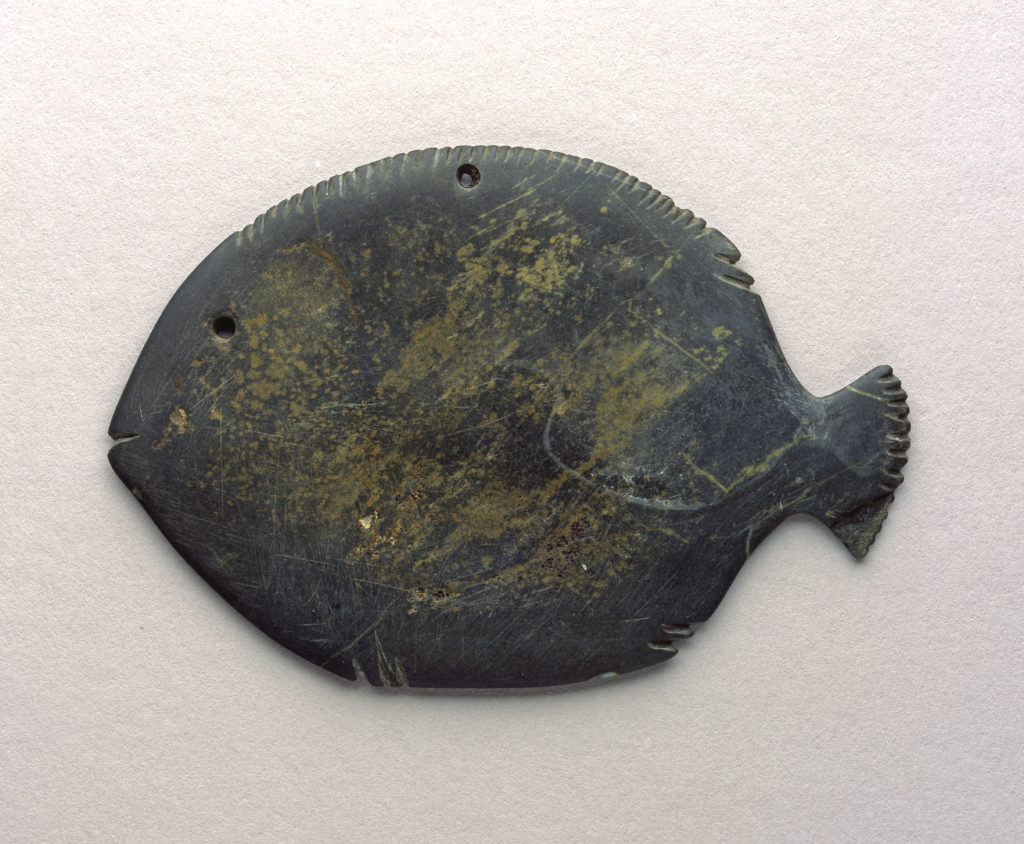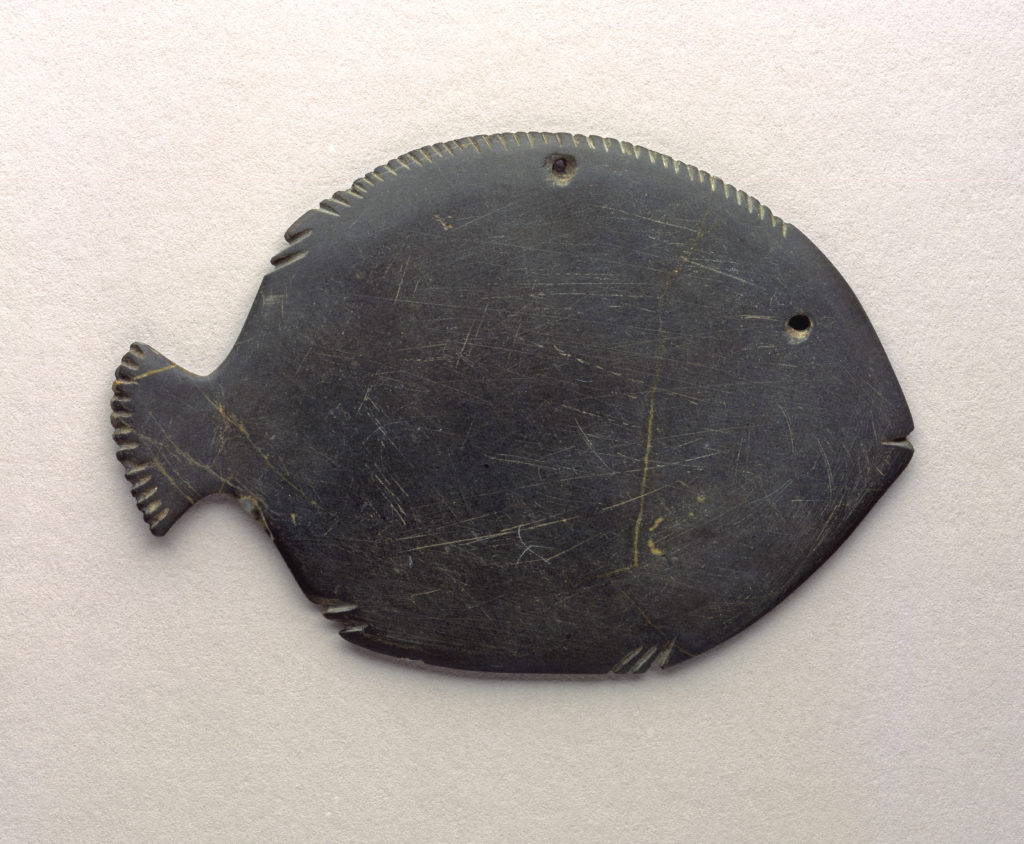Cosmetic Palette in the Form of a Fish (work of art)
Artwork Info
About
Key Ideas
- This object was likely buried as “grave goods” (objects buried with the deceased’s body) inside a tomb during the Predynastic Period in ancient Egypt. This was the time period between the earliest human settlement and the emergence of the first pharaoh (5500 to 3100 BCE).
- Cosmetic palettes found in tombs were often shaped like animals. Fish-shaped palettes were especially common. This fish-shaped palette has a round body and carved fins on its back and underside. It has two holes drilled into the stone: one for the eye and one for hanging.
- The palette is in the shape of bolti fish, or Tilapia nilotica, a type of edible fish from the Nile River. Ancient Egyptians associated bolti fish with fertility, growth, and rebirth. It was buried in a grave to help the deceased person achieve eternal life after death.
- This palette was not used to grind cosmetics during its owner’s lifetime. It was specifically made for burial.
Learn More
The Predynastic Period in Egypt spanned from the earliest human settlement to the appearance of the first pharaoh (5500 to 3100 BCE). During this time period, graves were not lavishly decorated. The dead were buried with basic necessities for the afterlife. These included food storage vessels, tools, and cosmetic palettes.
Cosmetic palettes were often carved in the shape of animals such as birds, turtles, and fish. The fish shape was the most popular for a long time. This fish-shaped palette has a round body. The short, angled cuts along its back depict a dorsal fin (the fin on the back of most marine and freshwater vertebrates). The fish’s ventral fin (on its underside) and tail fins are suggested by incisions, or light carvings. There are two holes drilled into this palette. One represents the fish’s eye, and the other would have been used for hanging the palette.
This cosmetic palette is believed to represent a bolti fish (Tilapia nilotica), a type of edible fish from the Nile River. Fish were sacred to the ancient Egyptians. They associated this type of fish with fertility, growth, and rebirth. This fish palette was buried in a grave to help the deceased person achieve eternal life.
Ancient Egyptians often used small grinding stones to make cosmetics and paints on cosmetic palettes. This palette was never used to grind cosmetics. It was specifically made for burial. This palette’s surfaces are smooth, except for some minor scratches (probably from production or accidental damage). If the palette had been used for cosmetics, its surface would have dents from crushing and repetitive grinding.
Additional Resources
Resources for Teachers:
- Read a short blog post about makeup in ancient Egypt.
- Read an article about tilapia fish in ancient Egypt.
- Read an article about the greywacke stone in ancient Egypt.
Resources for Students:
- View other objects from the Predynastic Period.
- Explore a webpage to learn more about Egypt.
- Watch a video to get an overview of ancient cosmetics and their different purposes.
- Watch a video to learn more about makeup and beauty ideals in ancient Egypt.


